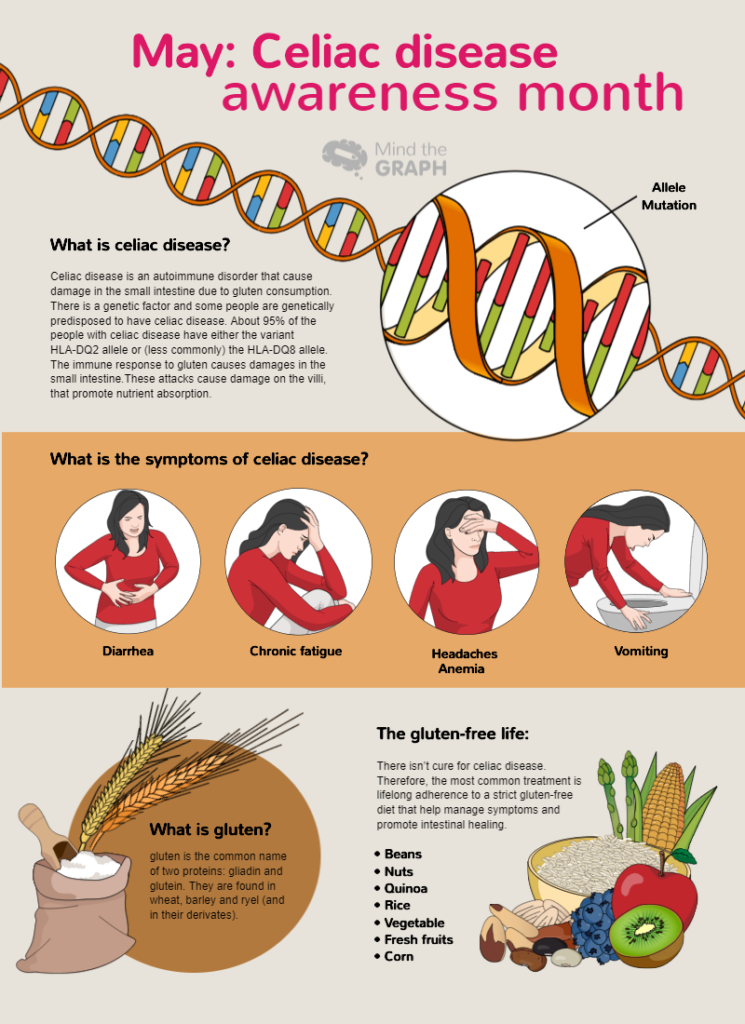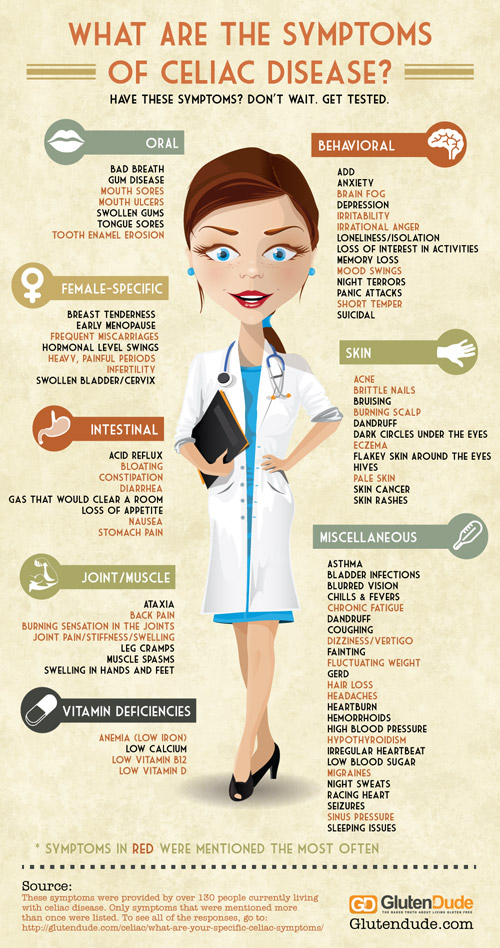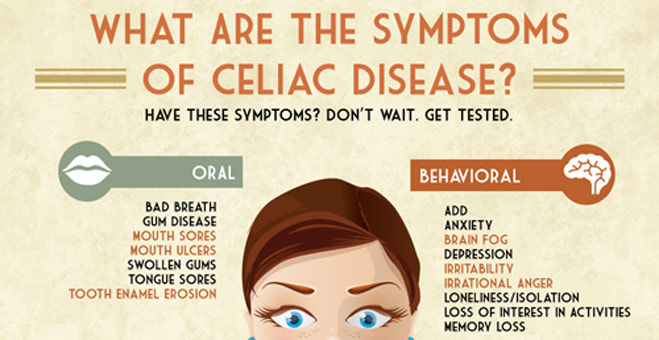Unraveling the mystery of Celiac Disease: How gluten can wreak havoc on your body and why a diagnosis matters.
Table of Contents
Introduction to Celiac Disease
Celiac disease is a condition that affects how some people’s bodies react to gluten, which is a protein found in wheat, barley, and rye. It is considered an autoimmune disorder, which means the body’s immune system mistakenly attacks healthy cells. In the case of celiac disease, the immune system targets the lining of the small intestine when gluten is consumed.
Individuals with celiac disease have to follow a strict gluten-free diet to manage their condition effectively. This means avoiding foods like bread, pasta, and baked goods that contain gluten. By understanding more about celiac disease and the importance of a gluten-free diet, you can help support friends or family members who have this condition and also learn more about maintaining digestive health.
What is Gluten?
Gluten is a protein found in certain grains like wheat, barley, and rye. It is what gives bread its chewy texture and pasta its stretchiness. For most people, gluten is perfectly safe to eat and is found in many delicious foods we enjoy.
Common Foods with Gluten
Many foods contain gluten, such as bread, pasta, cookies, and cakes. Kids should be aware that these foods can contain gluten and may not be suitable for those with gluten intolerance or celiac disease.
How Celiac Disease Works
Let’s dive into how celiac disease works in our bodies. When someone has celiac disease, their immune system, which usually helps protect the body from harmful invaders, reacts negatively to gluten. Gluten is a protein found in foods like wheat, barley, and rye. This reaction from the immune system is what causes all the trouble for people with celiac disease.

Image courtesy of mindthegraph.com via Google Images
The Body’s Reaction to Gluten
Now, let’s talk about what actually happens inside the body when someone with celiac disease eats gluten. Normally, when we eat food, our bodies break down the nutrients and absorb them to keep us healthy. For someone with celiac disease, when they eat gluten, their immune system sees it as a threat and attacks the lining of the small intestine. This can lead to damage to the intestine and make it hard for the body to absorb the good stuff in food.
Symptoms of Celiac Disease
When someone has celiac disease, their body reacts differently to gluten, causing a range of symptoms. It’s important to recognize these signs so that proper steps can be taken to manage the condition and improve overall health.
Common Symptoms
Here are some common symptoms that kids with celiac disease might experience:
Symptom 1: Stomach Pain – Eating gluten can often lead to stomach pain, cramping, and bloating for kids with celiac disease.
Symptom 2: Diarrhea – Some children may experience frequent diarrhea as a result of their bodies reacting to gluten.
Symptom 3: Fatigue – Feeling tired or lacking energy can be a common symptom of celiac disease, even after a full night’s sleep.
Symptom 4: Skin Rash – A red, itchy rash known as dermatitis herpetiformis can develop on the skin of some kids with celiac disease.
Symptom 5: Weight Loss – Children with undiagnosed celiac disease may have difficulty gaining weight or even lose weight unintentionally.
Recognizing these symptoms is crucial in identifying celiac disease early on and getting the necessary medical attention to manage the condition effectively.
Getting Diagnosed
When someone is experiencing symptoms that may indicate celiac disease, it’s important to see a doctor for a proper diagnosis. The doctor will ask about your symptoms and medical history to get a better understanding of what you’re going through. They may also order some tests to confirm whether or not you have celiac disease.

Image courtesy of mindthegraph.com via Google Images
Visiting the Doctor
During your visit to the doctor, they will talk to you about how you’ve been feeling and any symptoms you may have noticed. It’s essential to be honest and open so that the doctor can make an accurate diagnosis. They may also ask about your family history, as celiac disease can run in families.
Tests for Celiac Disease
The doctor may recommend a blood test to check for certain antibodies that are often present in people with celiac disease. If the blood test results suggest celiac disease, the next step may be to undergo a biopsy of the small intestine. During this procedure, a tiny piece of tissue is taken from the intestine and examined for signs of damage caused by celiac disease.
If the tests confirm that you have celiac disease, the doctor will work with you to create a treatment plan to manage the condition and improve your digestive health. This often involves following a strict gluten-free diet to avoid triggering the symptoms of celiac disease.
Living with Celiac Disease
Living with celiac disease means paying close attention to what you eat to stay healthy. People with celiac disease cannot eat gluten, a protein found in wheat, barley, and rye. When someone with celiac disease eats gluten, it causes their immune system to act up and attack the lining of their intestines. This can lead to stomach aches, diarrhea, and other uncomfortable symptoms.
What a Gluten-Free Diet Means
A gluten-free diet is essential for someone with celiac disease. It means avoiding all foods that contain gluten. This includes things like bread, pasta, cookies, and even some soups or sauces that might have hidden gluten. But don’t worry! There are plenty of delicious foods that are gluten-free, like fruits, vegetables, meat, fish, rice, potatoes, and more. It’s all about finding new yummy foods that make you feel good.
Challenges of Gluten Intolerance
Living with gluten intolerance can sometimes pose certain challenges for kids. One of the biggest challenges is not being able to eat certain foods that contain gluten, like cakes, cookies, and sandwiches. Imagine going to a birthday party and not being able to have a slice of cake or a cookie like everyone else. It can be tough!

Image courtesy of glutendude.com via Google Images
Another challenge is feeling left out or different from your friends when they are all sharing a snack that you cannot have. It’s important to remember that gluten intolerance is just a part of who you are, and there are many delicious gluten-free alternatives available that can be just as tasty!
Handling these situations can also be hard, especially when you’re surrounded by tempting treats that you know you can’t eat. But don’t worry, with a little planning and preparation, you can still enjoy yummy snacks and meals while staying gluten-free.
How to Help Friends with Celiac Disease
Having a friend with celiac disease means they have to be extra careful about what they eat to stay healthy. As a good friend, you can take a few simple steps to support them and make sure they feel included.
Understanding Gluten-Free
Your friend with celiac disease needs to follow a gluten-free diet, which means no wheat, barley, or rye. This includes foods like regular bread, pasta, and some snacks. Being aware of which foods contain gluten will help you choose safe options when eating together.
Supporting Your Friend
When planning activities or parties, consider offering gluten-free snacks or meal options. Your friend will appreciate your thoughtfulness and feel included in the fun. You can also ask what foods are safe for them to eat at a restaurant or gathering to make sure they have something they can enjoy.
Being Mindful of Cross-Contamination
Cross-contamination can happen when gluten-free foods come into contact with gluten-containing foods. To help your friend stay healthy, be mindful of this when sharing snacks or meals. Using separate utensils or serving dishes can prevent accidental exposure to gluten.
| Aspect | Definition |
|---|---|
| What is Celiac Disease? | Celiac disease is an autoimmune disorder where consuming gluten triggers an immune response that damages the lining of the small intestine. |
| Causes | Celiac disease is caused by a combination of genetic and environmental factors. It is common in individuals with a family history of the disease. |
| Symptoms | Symptoms of celiac disease can include diarrhea, bloating, weight loss, fatigue, and skin rashes, among others. |
| Diagnosis | Diagnosis of celiac disease involves blood tests to check for specific antibodies, followed by a biopsy of the small intestine to confirm damage. |
| Treatment | The only treatment for celiac disease is a strict gluten-free diet. This means avoiding wheat, barley, rye, and any foods that contain gluten. |
By being a supportive and understanding friend, you can make a big difference in your friend’s life with celiac disease. Your thoughtfulness and consideration will not only help them stay healthy but also strengthen your friendship.
Discovering New Yummy Foods
Are you ready to embark on a culinary adventure and discover new delicious foods that are safe for those with celiac disease? Eating gluten-free doesn’t have to be boring or bland. In fact, it can open the doors to a whole new world of flavors and dishes that you may have never tried before. Let’s dive into the exciting world of gluten-free cooking!

Image courtesy of glutendude.com via Google Images
Exploring Gluten-Free Recipes
One of the best ways to discover new yummy foods is to experiment with gluten-free recipes. From mouthwatering gluten-free pastas made from corn or rice to decadent flourless chocolate cakes, the options are endless. You can try making your own gluten-free pizza with a cauliflower crust or indulge in some gluten-free cookies that are just as tasty as the traditional ones.
Finding Tasty Substitutes
When it comes to common gluten-containing foods like bread, pasta, and baked goods, there are plenty of tasty substitutes available. You can enjoy fluffy gluten-free bread made from alternative flours like almond or coconut flour. Swap regular pasta for gluten-free varieties made from ingredients like quinoa or chickpeas. And don’t forget about the vast selection of gluten-free desserts that will satisfy your sweet tooth.
Exploring new yummy foods while following a gluten-free diet can be a fun and delicious journey. So, don’t be afraid to try new recipes, experiment with different ingredients, and get creative in the kitchen. Who knows, you may discover some new favorite dishes that you never thought you’d enjoy!
Summary
This article provided an overview of celiac disease, an autoimmune disorder linked to gluten intolerance. Gluten is a protein found in wheat, barley, and rye, commonly found in foods like bread and pasta. When someone with celiac disease consumes gluten, their immune system reacts, causing chronic inflammation.
The symptoms of celiac disease can vary but often include digestive issues that can make someone feel sick. Getting diagnosed involves visiting a doctor and undergoing specific tests to confirm the condition. Those with celiac disease need to follow a strict gluten-free diet to manage their digestive health and overall well-being.
Living with Celiac Disease
Children with celiac disease face challenges like not being able to enjoy certain foods at social gatherings. It’s essential to understand what a gluten-free diet entails and to find yummy alternatives to gluten-containing foods.
How to Help Friends with Celiac Disease
Supporting friends with celiac disease can be as simple as being mindful of their dietary restrictions and offering empathy and understanding. Discovering new gluten-free recipes and food options can be a fun and tasty way to adapt to a gluten-free lifestyle.
In conclusion, celiac disease requires a gluten-free diet to manage symptoms and improve digestive health. By understanding the condition and how to support those with it, children can navigate social situations while maintaining a healthy and enjoyable diet.
Frequently Asked Questions
What is celiac disease?
Celiac disease is a type of autoimmune disorder where the body’s immune system reacts to gluten, a protein found in wheat, barley, and rye.
How does celiac disease affect the body?
When someone with celiac disease eats gluten, it causes chronic inflammation and damages the lining of the small intestine, making it hard for the body to absorb nutrients.
What are the common symptoms of celiac disease?
Some common symptoms of celiac disease include stomach pain, bloating, diarrhea, fatigue, and weight loss. It can also lead to problems with the skin, bones, and brain.
How is celiac disease diagnosed?
To diagnose celiac disease, a doctor may order blood tests and a biopsy of the small intestine. It’s important to see a healthcare provider if you suspect you have celiac disease.
What does a gluten-free diet mean?
A gluten-free diet means avoiding foods that contain gluten, like bread, pasta, and cakes. Instead, you can enjoy fruits, vegetables, meat, fish, and gluten-free grains like rice and quinoa.
What are some challenges of having gluten intolerance?
One challenge of gluten intolerance is not being able to eat certain foods at parties or restaurants. It’s important to communicate your dietary needs and always carry safe snacks.
How can I support a friend with celiac disease?
You can support a friend with celiac disease by being understanding of their dietary restrictions, helping them find safe food options, and choosing gluten-free activities to do together.
How can I discover new delicious foods on a gluten-free diet?
You can discover new tasty foods by exploring gluten-free recipes online, trying out different gluten-free products at the store, and experimenting with cooking and baking at home.





